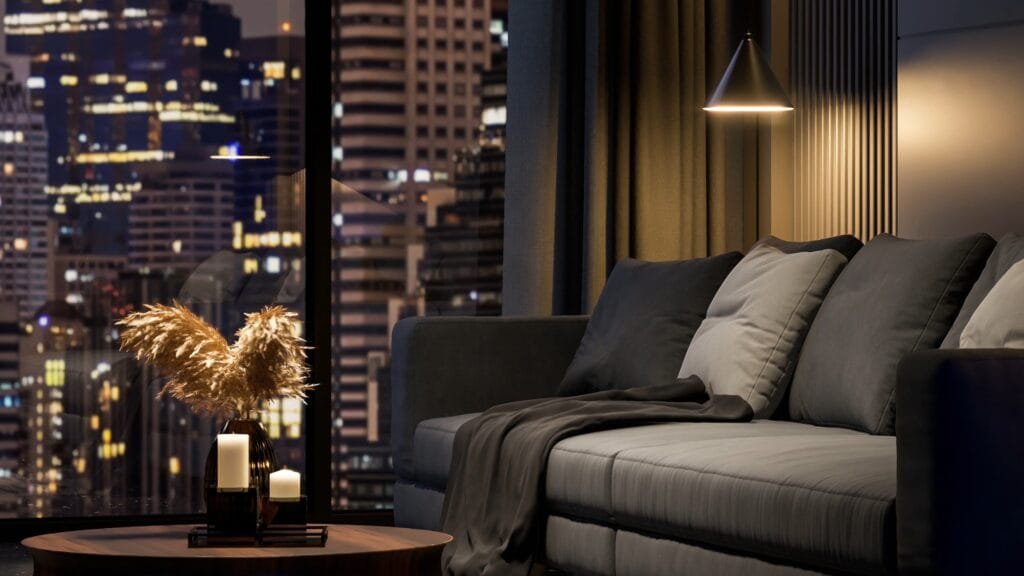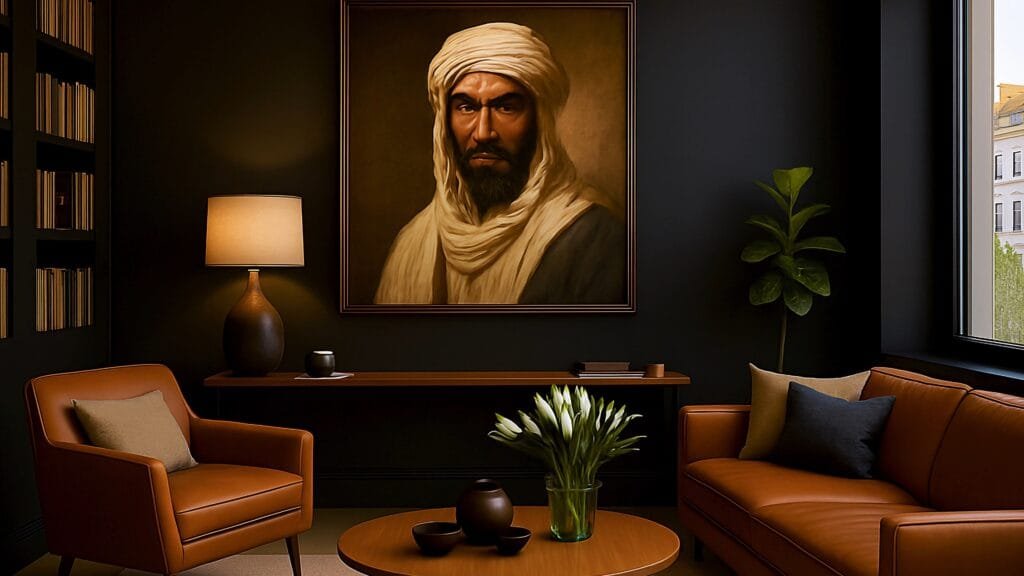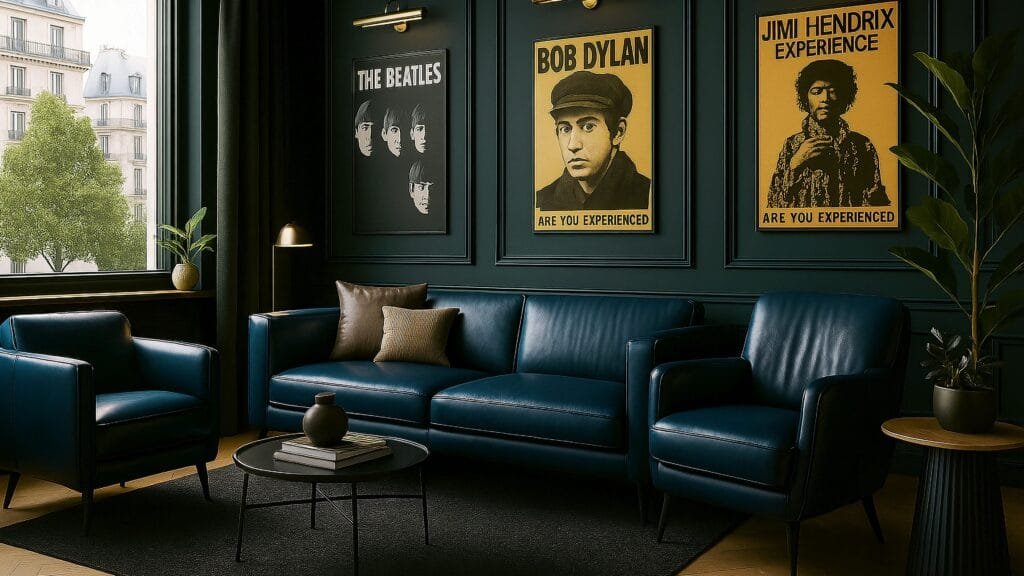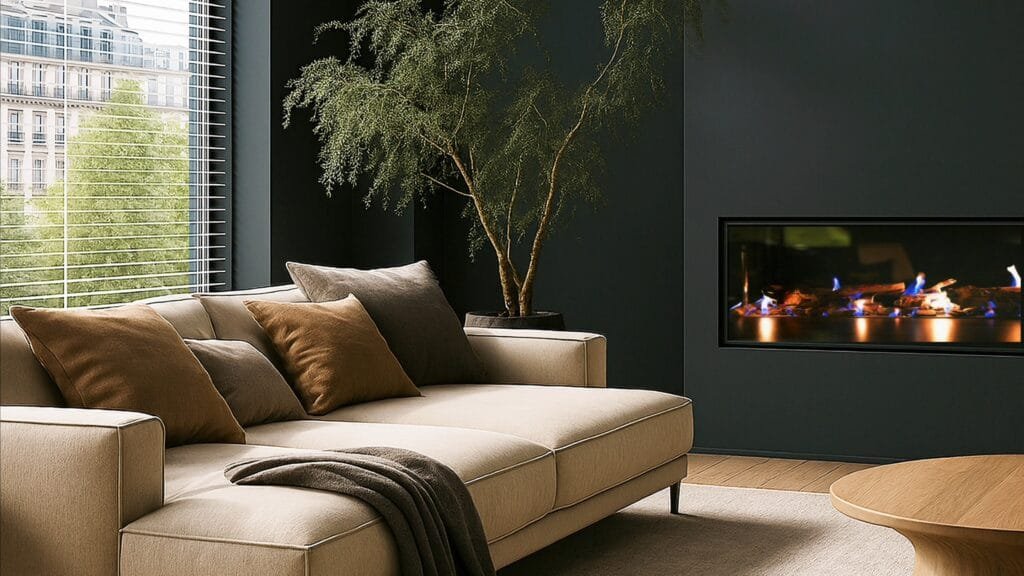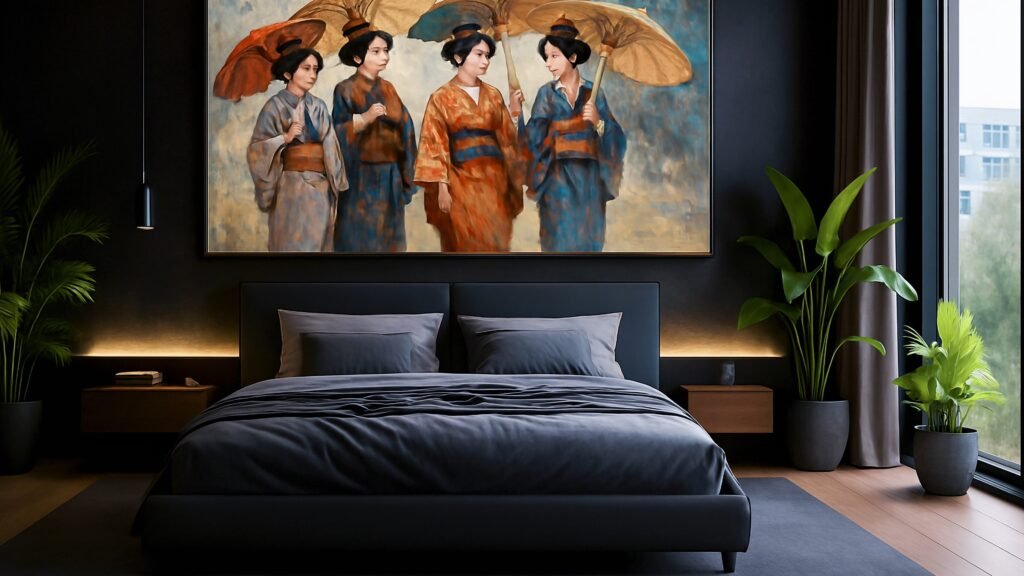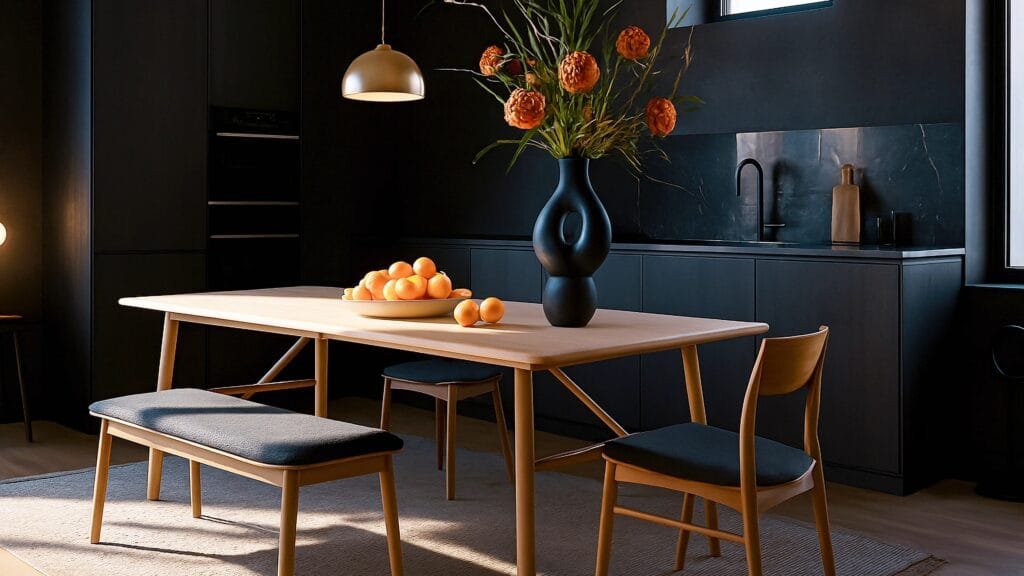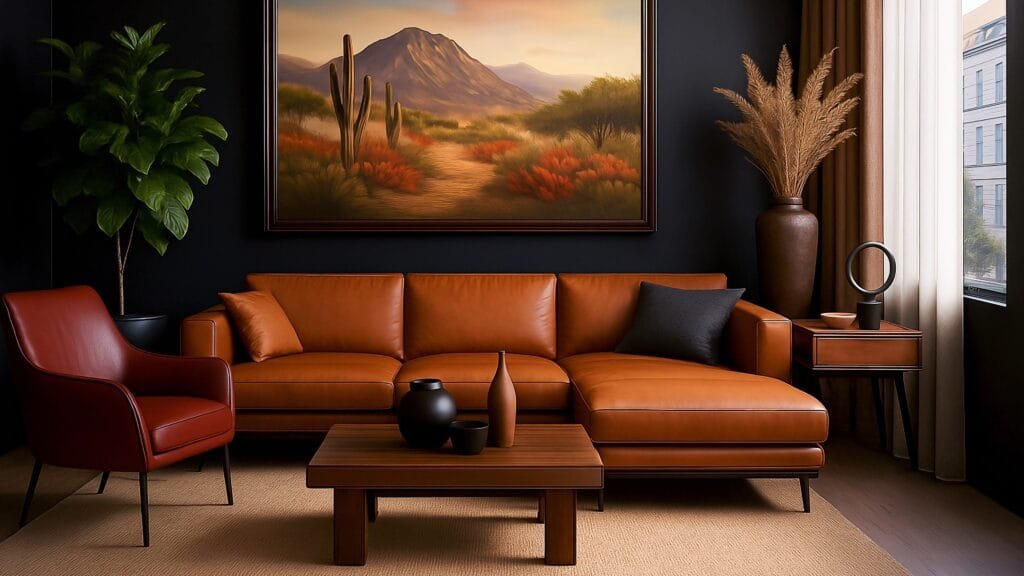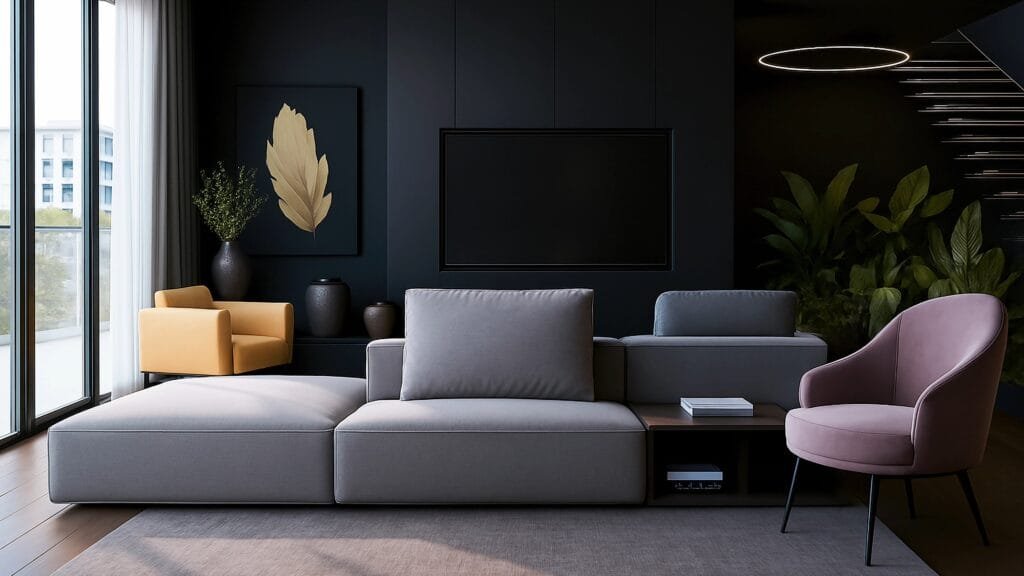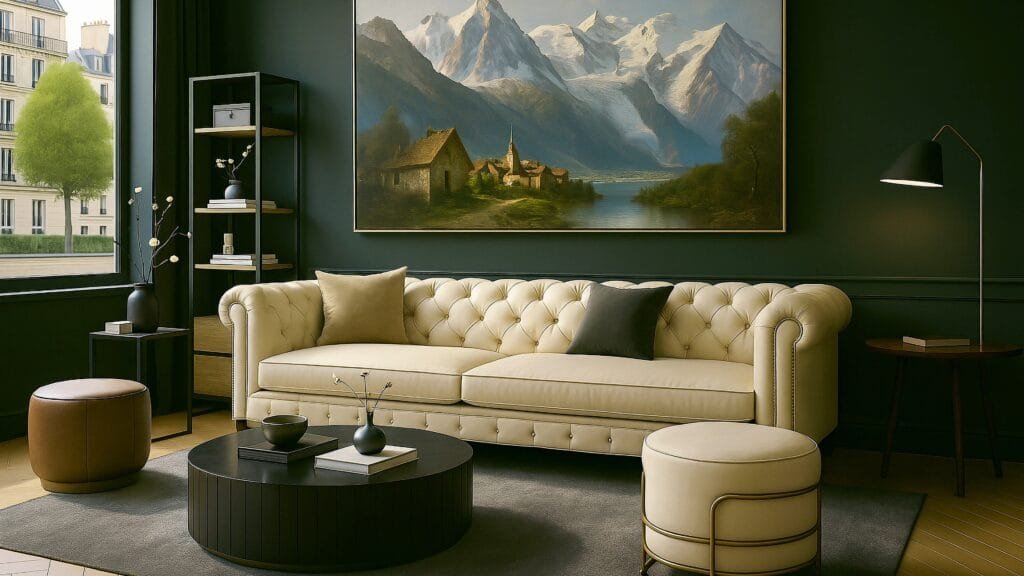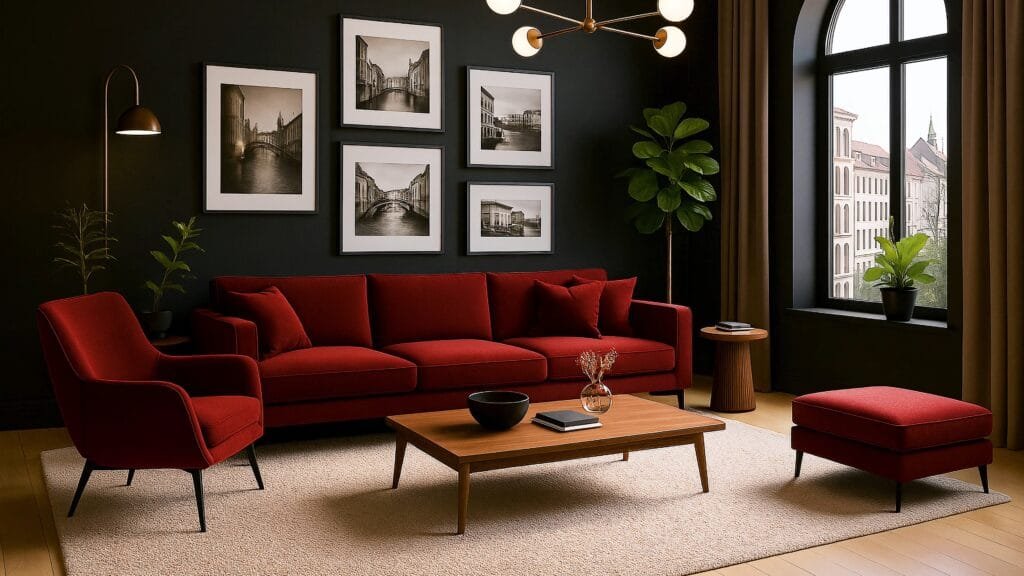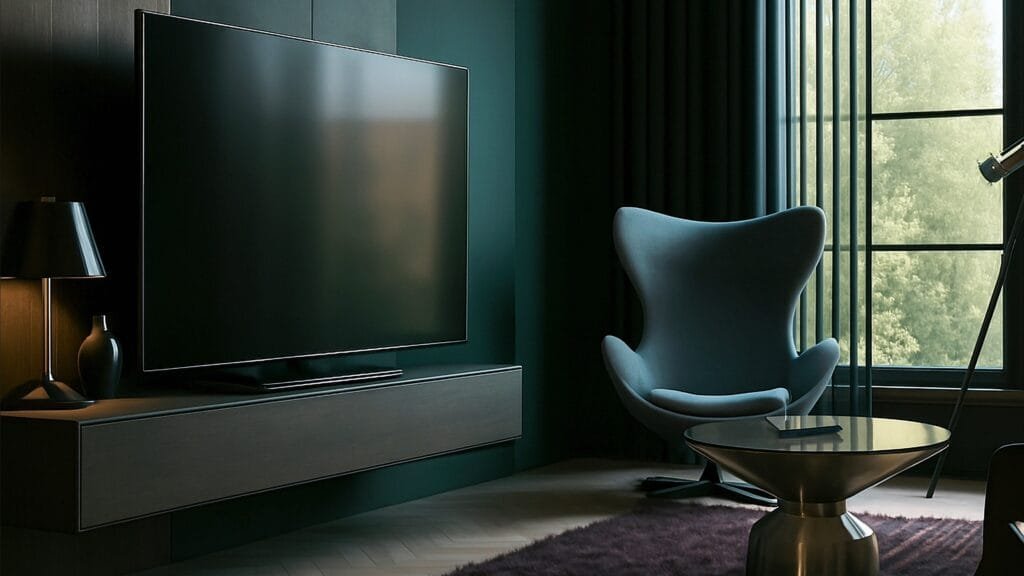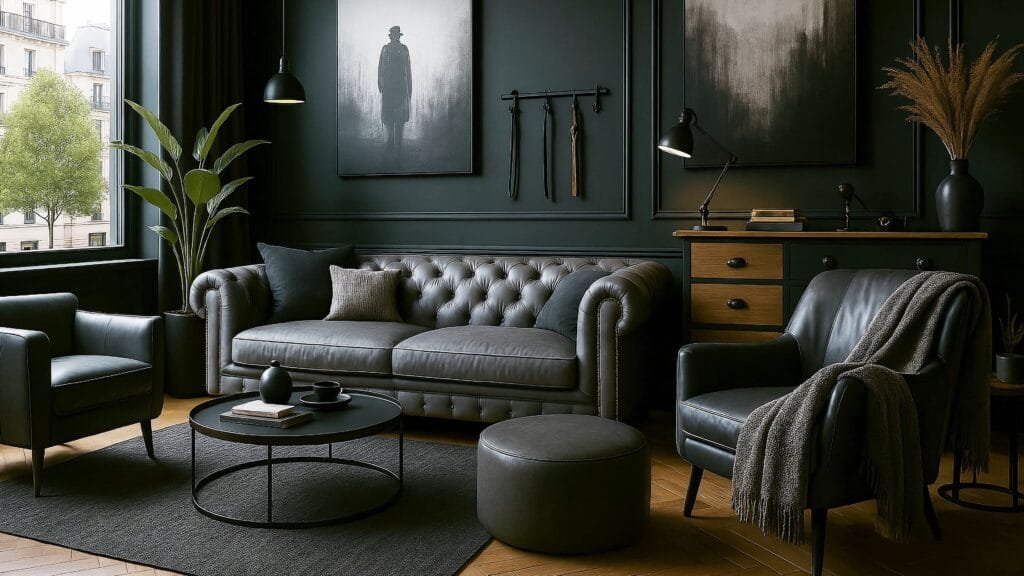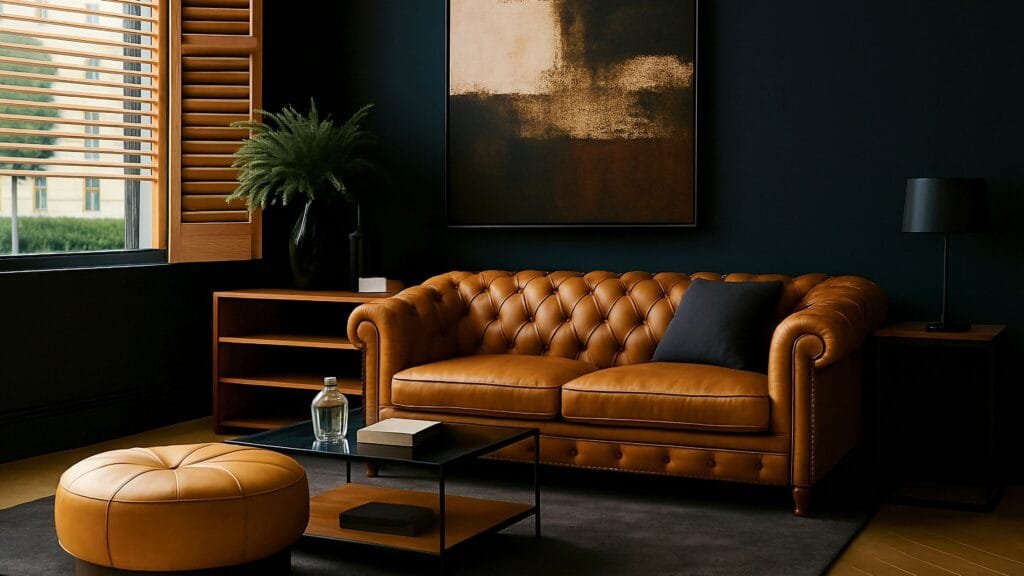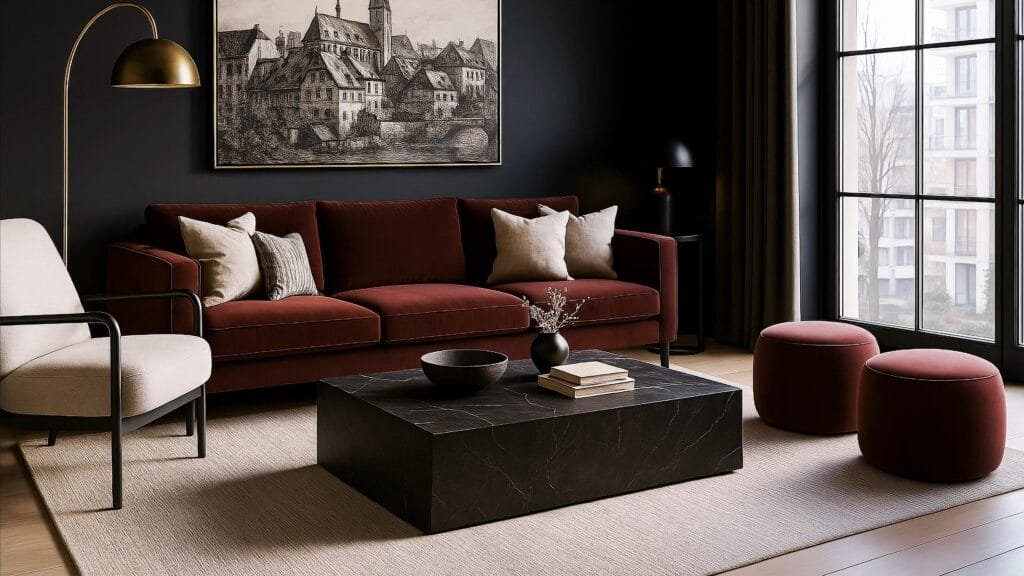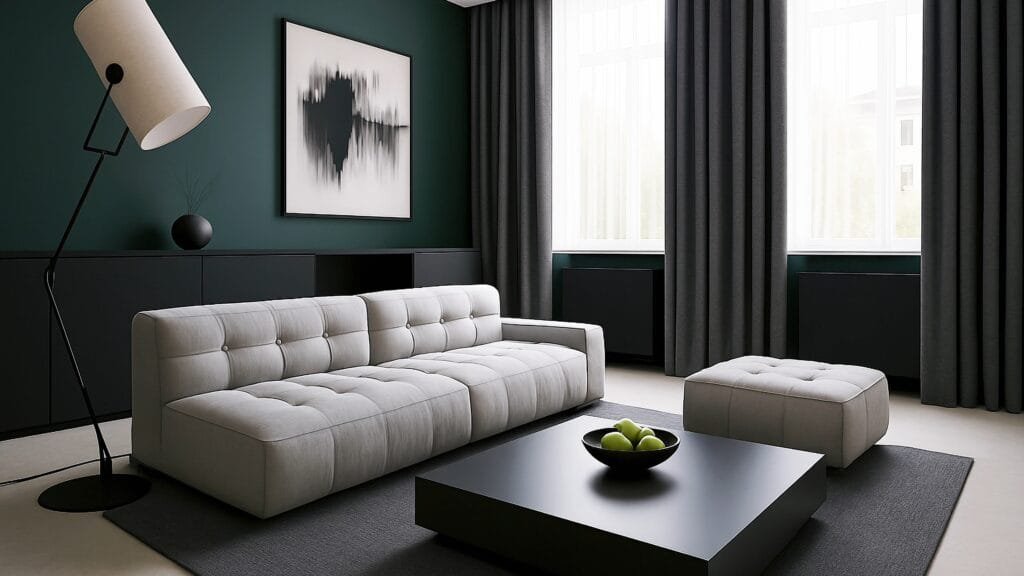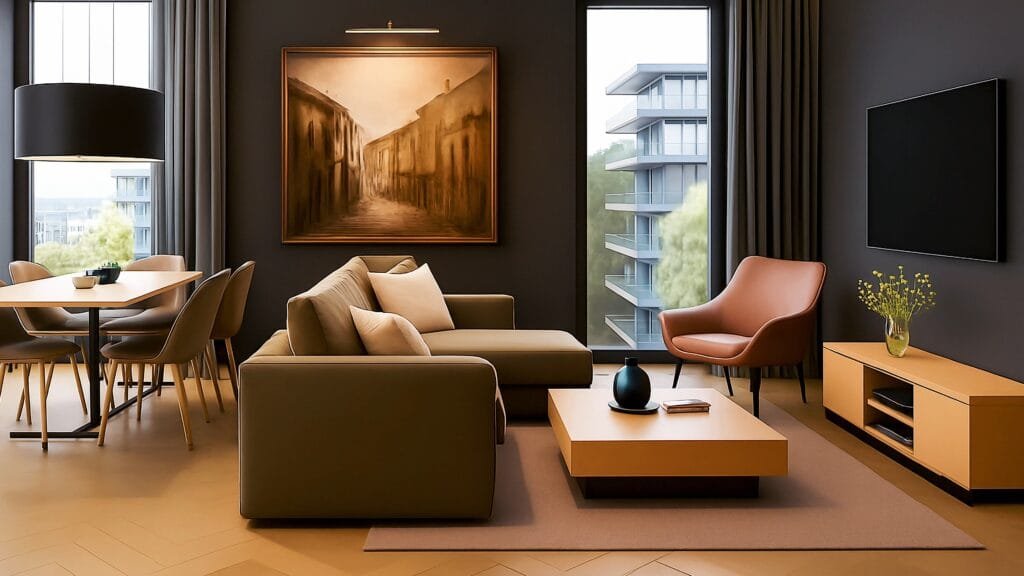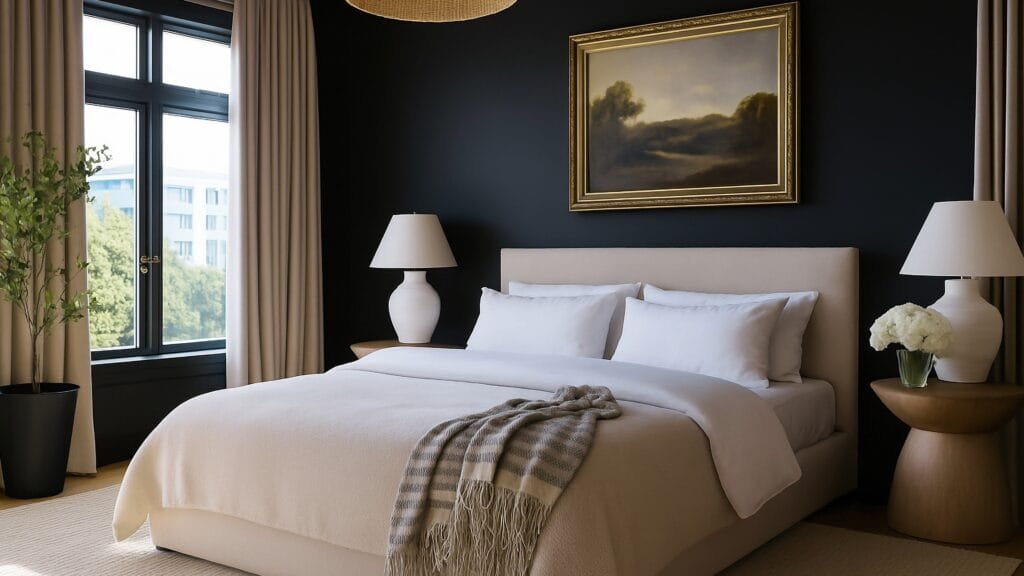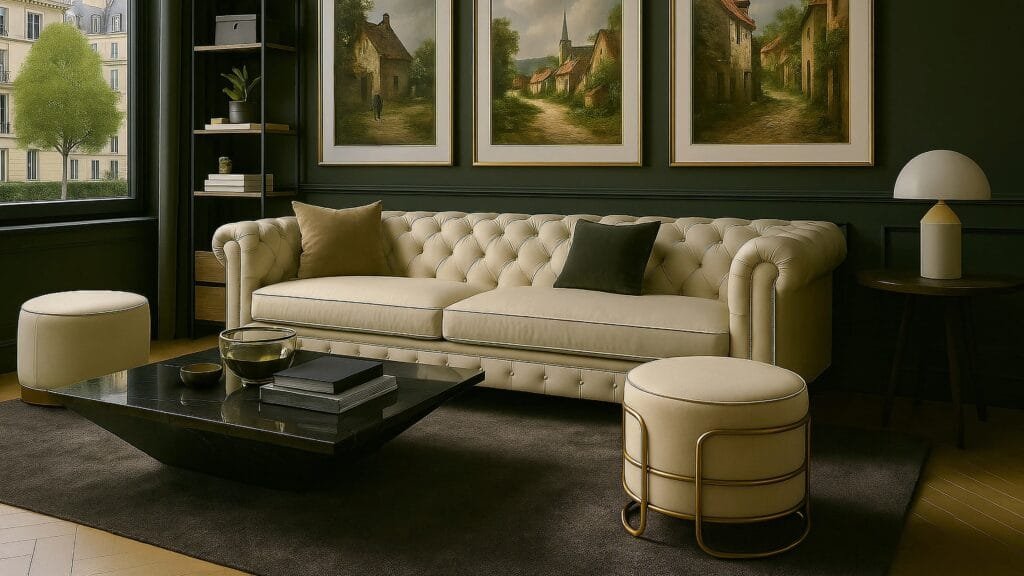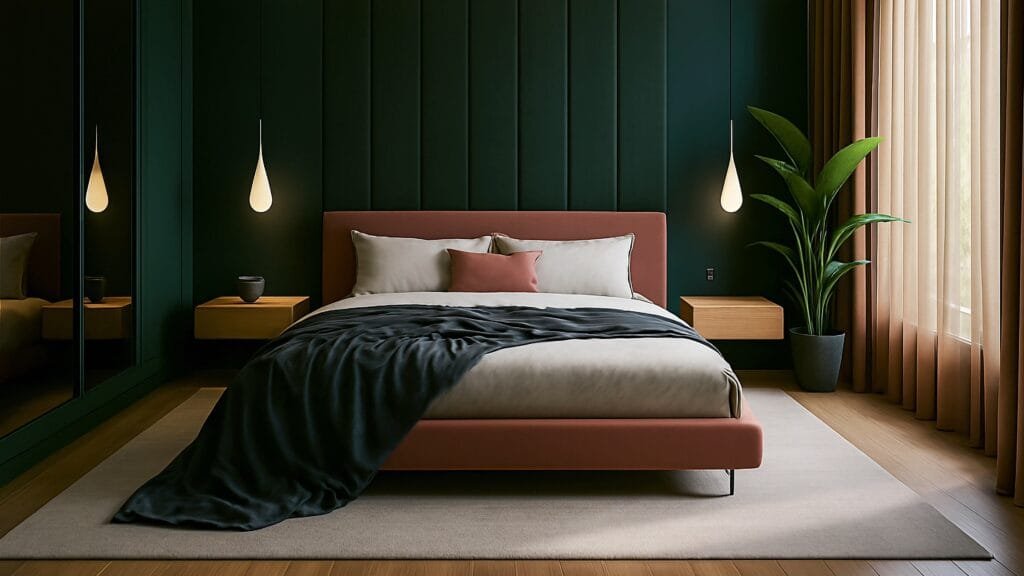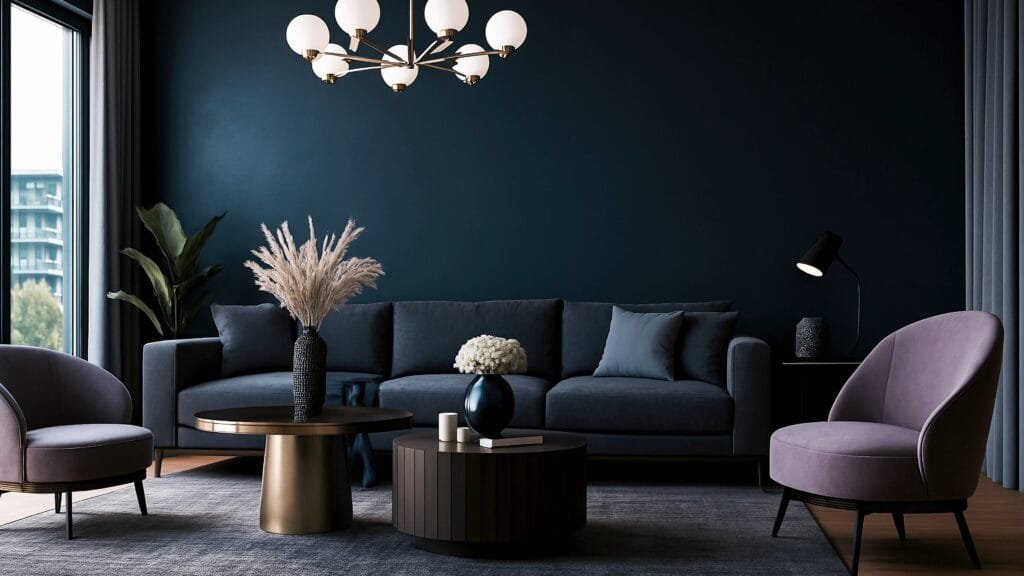Explore the transformative power of dark colors in small spaces. Discover how to create a sophisticated and cozy atmosphere with strategic design choices. Learn about effective furniture placement, decor layering, and the importance of contrast in enhancing compact interiors. This guide offers inspiration and practical tips for maximizing your small living areas, turning them into stylish sanctuaries that reflect your personality and taste. Join us as we delve into successful real-life examples and encourage you to share your own design journey with dark hues.
The Power of Dark Colors in Small Spaces
The use of dark colors in small spaces can be a transformative design choice that challenges conventional wisdom. Traditionally, lighter shades have been favored for compact interiors due to their ability to reflect light and create an illusion of space. However, colors such as sooty black, deep green, and rich navy blue can infuse these areas with a sense of sophistication and character. When used thoughtfully, dark hues can alter perception, giving the impression of depth and breadth within a confined area.
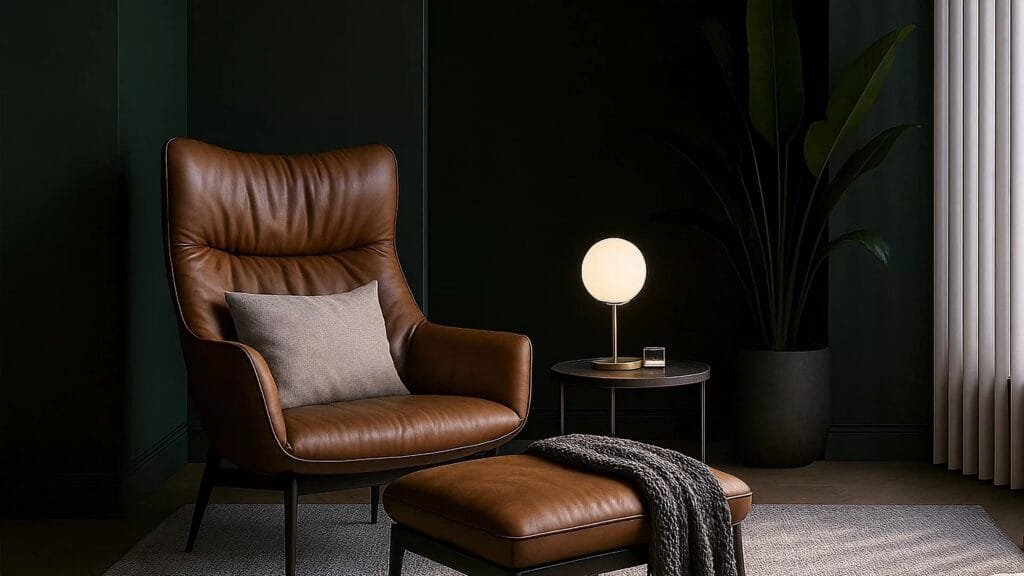
Psychologically, dark colors can evoke a sense of coziness and security. They can wrap a room in an inviting embrace, inviting occupants to relax and unwind. In terms of color theory, such tones have the unique ability to absorb light rather than reflect it, creating an intimate atmosphere. For example, a small living room painted in a dark forest green can appear more expansive when complemented with light-colored accents and strategic lighting, enabling a delightful contrast that enhances spatial dynamics.
Please read our article watch the newly uploaded video from our YouTube channel:
“Grig Stamate – Interior Design Solutions”
https://www.youtube.com/@GrigStamate
When Dark Paint Shines: 50+ Small Space Design Success Stories (video)
Here, you can see other related videos from our channel:
Color Clash or Design Dream? Terracotta and Slate Blue Living Rooms (video)
“Mocha Mousse”: The Chic New Neutral Color for this Year (video)
Balance becomes crucial when integrating dark tones into small interiors. Designers often recommend combining dark shades with lighter elements, such as furnishings or wall art, to prevent overwhelming the space. A well-thought-out color palette not only improves aesthetics but also fosters a visually appealing contrast that can energize or calm the environment, depending on the desired mood. Successful implementations include dark cabinetry paired with bright countertops in kitchens, or charcoal walls alongside creamy textiles in bedrooms. Such thoughtful combinations embody the principle that contrast is key in design.
To illustrate this idea, many modern urban apartments showcase the elegance of dark palettes, with owners curating their spaces to achieve a balance between dramatic colors and light-enhancing features. Through real-life examples and captivating visuals, one can see how embracing darker shades can effortlessly elevate small spaces into stylish sanctuaries that reflect personality and taste.
Maximizing Small Spaces through Effective Design
Designing small spaces can present unique challenges that require innovative solutions. One effective strategy is to utilize multifunctional furniture, which not only saves space but also enhances functionality. For instance, select ottomans with hidden storage or coffee tables that can expand into dining surfaces. This approach allows homeowners to maintain a minimalist aesthetic while ensuring that the space accommodates various activities without feeling cluttered.
In addition to choosing the right furnishings, careful furniture placement plays a crucial role in optimizing limited areas. Aim to create a natural flow by positioning larger pieces along walls to free up central space. Sofas and chairs should face each other to encourage conversation and connection, reinforcing the feeling of openness. It is vital to keep pathways clear, allowing for easy movement throughout the space.
When working with dark walls, it is essential to select furniture that complements the color scheme. Light-colored or reflective surfaces can create a striking contrast, helping to brighten the room and eliminate any potential feelings of confinement. Incorporating a mix of textures and materials further enhances interest while maintaining a sophisticated palette. For instance, consider pairing dark walls with light wood or metallic accents, which can introduce an elegant touch without overwhelming the space.
Moreover, maintaining a balanced design is paramount in small areas. Overcrowding with excessive furniture or decor can lead to a cluttered atmosphere, making the space feel even smaller. Instead, opt for a few well-chosen pieces that serve both functional and aesthetic purposes. By focusing on key design elements and avoiding superfluous items, homeowners can create a harmonious environment that feels both spacious and inviting.
Ultimately, smart design choices enable individuals to maximize their small spaces while creating a stylish and functional living area. Through thoughtful furniture selection and strategic placement, it is possible to transform any limited space into an inviting and efficient oasis.
Decor and Accessories: The Finishing Touches for Elegance
The choice of decor and accessories is paramount in small spaces, particularly when these areas are painted in dark tones. Dark walls can create an intimate and cocooning atmosphere, but they require thoughtful accessories to ensure the space feels welcoming rather than oppressive. To achieve elegance in such environments, selecting the right artwork, textiles, and decorative pieces is essential. Opting for vibrant art pieces or colorful photographs can serve as lively focal points, drawing attention and contrasting beautifully with the darker backgrounds.
Layering different textures is another effective strategy in enhancing the appeal of dark-painted small spaces. Combining soft textiles, such as plush cushions or textured throws, with sleek metals or ceramics adds depth and richness. These layers not only create visual interest but also contribute to a cozy ambiance that invites relaxation. Additionally, neutral or lighter-colored textiles can help soften the impact of dark walls while still allowing them to shine.
Incorporating greenery is also a key element in balancing light and bringing liveliness to dark interiors. Indoor plants can introduce vibrant colors and natural textures, countering the starkness sometimes associated with darker hues. Ferns, snake plants, or pothos are particularly suitable for small spaces, as they can thrive in limited light and their lushness enhances overall aesthetic appeal.
Moreover, it’s crucial to consider the interplay of light and shadow in these settings. Strategically placed mirrors can reflect light and create an illusion of increased space, adding to the overall brightness of the room. When selecting decor, aim for pieces that incorporate reflective surfaces, thus augmenting the illumination present in the space while maintaining a sophisticated design. Real-life success stories reveal how individuals have transformed their small homes through thoughtful decor choices, offering inspiration and practical ideas for others looking to elevate their interiors.
Transform Your Small Space: Share Your Journey
As we arrive at the conclusion of our exploration into the art of designing small spaces with dark paint, we invite you to reflect upon your own journey. The success stories highlighted throughout this post serve as an inspiration, showcasing how powerful dark colors can be in transforming compact areas. Whether your experience has been a resounding success or a valuable lesson learned, sharing these moments can prove enriching for both you and our community of readers.
Consider how dark hues have affected your own space. Have they made your room feel more intimate, or perhaps added an element of sophistication? It is essential to recognize that each small space is unique, and your insights could assist others as they grapple with similar design decisions. By discussing your accomplishments and challenges, you contribute to a communal reservoir of ideas that might inspire someone else to embrace bold dark colors within their own small interiors.
Engagement is key in this creative journey, and we encourage you to utilize the comments section to ask questions or share your experiences regarding dark paint. Have you found a particular shade that worked wonders, or do you have tips on achieving the desired look without overwhelming the space? Every piece of advice shared helps to build a network of support and innovation amongst those seeking to enhance their small living areas.
As you embark on or continue your design endeavors, we urge you to embrace the challenge of small spaces with dark shades. Not only can these colors create depth and dimension, but they can also foster a sense of comfort and refuge. Join us in transforming our surroundings, and let the world see how dark paint, paired with creativity, can lead to spectacular design masterpieces in any small space.
Other related posts from our website:
Let’s see here, three of them:
https://howtobuildahouseblog.com/color-clash-or-design-dream-terracotta-and-slate-blue-living-rooms/
https://howtobuildahouseblog.com/how-these-trendy-sofa-colors-can-transform-a-space/
https://howtobuildahouseblog.com/fabulous-minimalist-design-with-a-splash-of-color/
Thank you so much for your attention.
We also sincerely hope you like our ideas from this post, and you have also enjoyed our uploaded YouTube video.
See you next time at another article. Thank you so much for your time. Bye now!
